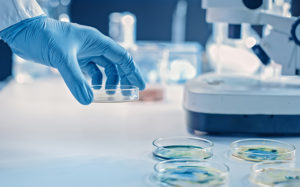INDUSTRY VIEWS
Bringing aquaculture into mission to boost sustainable livestock production in Sub-Saharan Africa
An interview with Ben North, technical director, Global Commercial Development, Aquaculture Health
Helping Mediterranean fish farmers quickly identify disease issues
An interview with Emre Berke, DVM, PhD, field technical support associate for PHARMAQ.
Vaccine study offers new insight on Norway’s winter ulcer problem
In recent years, the Norwegian aquaculture industry has struggled against the rise of “variant” forms of Moritella viscosa, a bacterium which causes the disease winter ulcer in Atlantic salmon. This has led to concerns about the efficacy of existing vaccines against the pathogen.
Tackling jellyfish blooms affecting farmed fish in the British Isles
Tiny jellyfish have contributed to cases of gill disease in farmed Atlantic salmon in Scotland and Ireland in the past year, but early recognition and maintaining good general gill health are key to reducing the threat.
Race to control bacterial disease which threatens Irish salmon production
The bacterium Piscirickettsia salmonis, which causes the disease salmonid rickettsial septicemia (SRS) in Atlantic salmon, is becoming an increasing concern on fish farms in Ireland.
Reducing the need for live fish in vaccine research and development
Initiatives to avoid the use of live animals in research are happening across academia and industry worldwide, based on the “3 Rs” principles — replacement, reduction and refinement.
New tools can transform understanding of aquaculture’s microbiology
The microbiome of aquaculture systems has long been known to have a significant role in fish health and welfare issues, yet a full understanding of these interactions has often eluded experts.
Study tracks salmonid alphavirus transmission in Norwegian aquaculture
New genomic analysis of salmonid alphavirus subtype 2 (SAV2) samples from Norway has shed new light on how the pathogen has spread through the country since its introduction in 2010.
Distinct bacterial variants make winter ulcer diagnostics ever-more important
A complex genetic picture is posing problems for Norwegian salmon farmers managing stocks affected by winter ulcer.
Vaccines and smart sea lice control helping Chilean salmon giant improve sustainability
Salmon rickettsial septicemia and Caligus sea lice are two of the major concerns affecting salmon production in Chile. Thanks to new approaches in fish-health management, Blumar Seafoods is successfully limiting their impact.
- « Previous
- 1
- 2
- 3
- 4
- Next »










